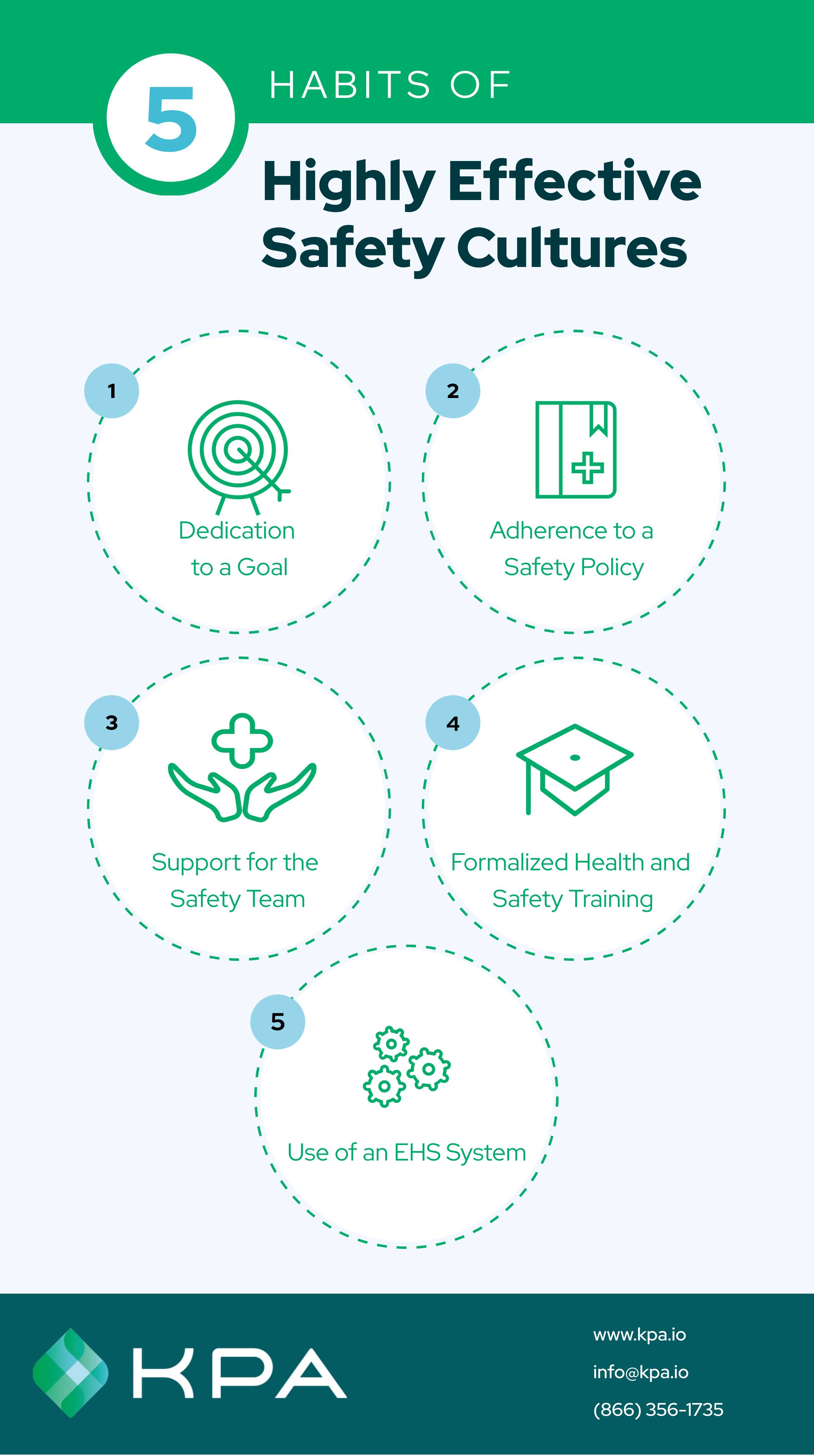5 Critical Habits For Building An Effective Safety Culture
No two companies are alike. Nonetheless, companies with excellent workplace safety records tend to have a few things in common. They don’t worry about regulatory fines or astronomical legal fees, for instance. They also tend to pay lower-than-average workers’ compensation insurance premiums. And they have built safety culture habits into the way they work.
Where the similarities matter most, however, are not in what these companies have achieved, but how they’ve achieved it. An exceptional safety record doesn’t happen by accident. In almost all cases, it’s the result of strategic planning a commitment to safety, and the right habits—a combination of actions and attitudes adopted by people up, down, and across the organization.
In other words, wherever there are few or no incidents, there’s a strong safety culture.
And like sustainable ecosystems or winning sports teams, all safety cultures share a few basic habits:

It can take a lot of work to nurture and keep a safety culture alive. You don’t have to change everything at once. Instead, focus on adopting just a few essential safety culture habits: setting safety goals, adhering to policies, supporting your safety team, training your key employees, and using a system to manage it all.
Why not start today?
Get the Guide: A Data-Driven Guide to Workforce Safety
Learn how to leverage your safety data and analytics to maintain a safe workplace.

